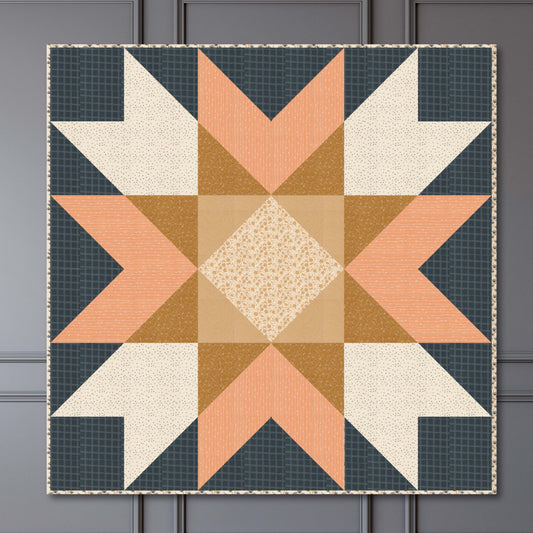
It’s so much easier than you think!
This short post is going to cover a few tips on how to get started with this unique stitch.
Caveat: I used a Bernina 570qe which has this stitch programmed into it.

If you’re using a different sewing machine, this process may not work for you (although it’s always worth a try!), but I have heard others have good results with a similar method.
Start by gathering your supplies:
- Invisible thread
- Your chosen “stitch” color, darker will be more visible on lighter fabrics
- Something to sew or quilt (I did it on this table runner for Bernina, which you can see HERE)
- Patience (yes it’s going to take a little bit for it to work)
Start by winding your bobbin with your chosen color thread. The invisible thread will be in the top thread position.

Grab some scraps to practice on, even better, use the same fabric that you’ll being using in the final project.
Change your foot to be 1D and lower the walking foot if you have it on your machine.
Load the invisible thread as the top thread, making sure it doesn’t curl out of any of the necessary sewing machine loops.

My invisible thread occasionally did this, so just be careful to watch it as you sew.
Change your stitch to 1304.
I lengthened my stitch to 3.6, after a lot of experimenting, that seemed to work the best.

Note, I was using an essex linen, which has a very different weave than other fabrics, so change the length (by very small increments) until you find the one that works.
I changed the thread tension to 7.75. I saw other tutorials that had theirs at 8, so practice and see what works best.
Slowly start stitching, I usually held the top invisible thread at the beginning to give it tension.

If something is off, it will gather/pucker which means you need to adjust either the tension or stitch length.
Why did I use 1304?
I tried all of the programmed stitches and this one seemed to work the best, and was most consistent (ironically because it’s the “irregular stitch!”).

My second favorite stitch was 1308, it almost gave me the quality of stitch that I was looking for, but seemed to be less consistent than 1304.

Some Tips for the Handstitch Look on a Sewing Machine
Go slow! I lowered my speed so I couldn’t go faster than I should (it’s so tempting).
I found that when I went fast, the stitches didn’t form as well, this could have been because of the fabric type I was using.
Be watchful of the invisible thread, it tangles easily, jumps out of the loops up top easily and overall is slightly finicky to work with, but totally worth it!

Practice a lot before starting your final project. Take 15-20 minutes perfecting your stitch, otherwise you’ll get very frustrated.
Definitely keep adjusting your tension until it's exactly where you need it to be!

The handstitch is beautiful, it does however show a bit of the invisible thread, so if that’s going to bother you.. you may want to just hand stitch!
Overall, I adore the look and I’ll definitely whip it out for other projects in the future! Questions? Ask them below!




4 comments
I just came across your website and tips. Thank you so much for the tutorial on the “hand stitching” by machine. I love the look and will save me $$$ as I now won’t have to purchase a Sashiko dedicated maching.
Can you only have Bernina? I have a Baby Lock
———
Quiltd Studios replied:
Great question, some bernina’s have this stitch programmed into it, but if you Google your particular sewing machine model number and “homemade stitch” often there’s a stitch similar that you can use. If you try it out, let me know how it goes!
Why do you need to use invisible thread? And can something quilted using invisible thread be laundered as usual or will it melt or something (horrors)?
———
Quiltd Studios replied:
I haven’t tried without invisible thread, I can imagine it would still work but the stitches would appear to be closer together. If you try it, let me know how it goes! As far as washing, I would hand wash only in cool water.
Ignore my 1st question as I scrolled down the page and found this tutorial which explains more than what I was asking. Great technique that I will have to try on my Bernina 570qe!